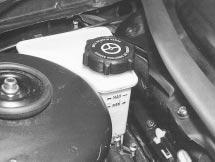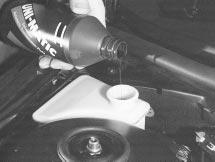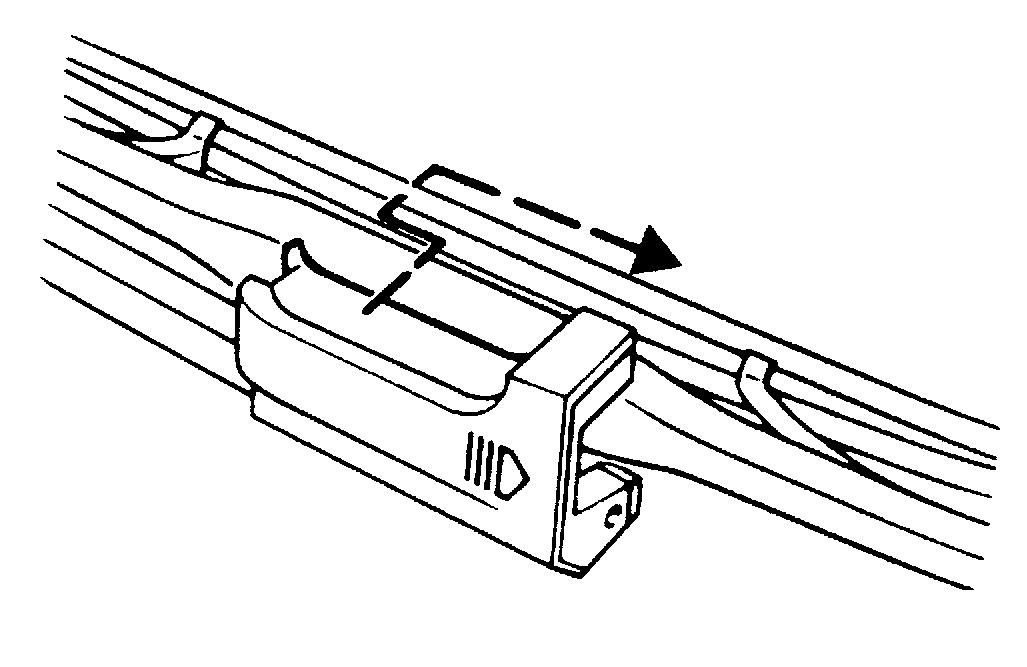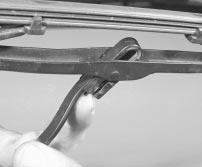
3 minute read
Check and lubricate the doors and bonnet (Section

5.4 Power steering fluid reservoir, showing “MAX” and “MIN” marks 5.6 Topping-up the power steering fluid reservoir


6.6 Releasing the catch to remove a windscreen wiper blade 6.7 Tailgate wiper blade removal
the tyre to cause deflation. If removal of a nail reveals that the tyre has been punctured, refit the nail, so that its point of penetration is marked. Then immediately change the wheel, and have the tyre repaired by a tyre dealer. Do not drive on a tyre in such a condition. If in any doubt as to the possible consequences of any damage found, consult your local tyre dealer for advice. 8 General tyre wear is influenced to a large degree by driving style - harsh braking and acceleration, or fast cornering, will all produce more rapid tyre wear. Interchanging of tyres may result in more even wear; however, it is worth bearing in mind that if this is completely effective, the added expense is incurred of replacing simultaneously a complete set of tyres, which may prove financially restrictive for many owners. 9 Front tyres may wear unevenly as a result of wheel misalignment. The front wheels should always be correctly aligned according to the settings specified by the vehicle manufacturer. 10 Don’t forget to check the spare tyre for condition and pressure. 11 Legal restrictions apply to many aspects of tyre fitting and usage, and in the UK this information is contained in the Motor Vehicle Construction and Use Regulations. It is suggested that a copy of these regulations is obtained from your local police, if in doubt as to current legal requirements with regard to tyre type and condition, minimum tread depth, etc.
1 The power steering fluid reservoir is located on the right-hand rear corner of the engine compartment. 2 For the fluid level check, the power steering system should be at its normal operating temperature, so it is best to carry out the check after a run. 3 Position the vehicle on level ground, with the front wheels pointing straight ahead, and switch off the engine. 4 Check that the fluid level is up to the “MAX” mark on the reservoir (see illustration). 5 If topping-up is required, first use a clean rag to wipe the filler cap and the surrounding area, to prevent foreign matter from entering the system. Unscrew and remove the filler cap. 6 Top-up the level to the “MAX” mark, using the grade of fluid specified at the beginning of this Chapter (see illustration). Be careful not to introduce dirt into the system, and do not overfill. The need for frequent topping-up indicates a leak, which should be investigated. 7 Refit the filler cap.
1 The windscreen wiper and blade assembly should be inspected at the specified intervals for damage, loose components, and cracked or worn blade elements. 2 Road film can build up on the wiper blades and affect their efficiency, so they should be washed regularly with a mild detergent solution. 3 The action of the wiping mechanism can loosen bolts, nuts and fasteners, so they should be checked and tightened, as necessary, at the same time as the wiper blades are checked. 4 If the wiper blade elements are cracked, worn or warped, or no longer clean adequately, they should be replaced with new ones. 5 Lift the wiper arm and blade away from the glass. 6 To remove the windscreen wiper blade, release the catch on the arm, then turn the blade through 90° and withdraw the blade from the end of the arm (see illustration). 7 To remove the tailgate wiper blade, push the wiper blade forward, and at the same time depress it against the spring pressure, then withdraw it from the end of the arm (see illustration). 8 If the metal part of the wiper blade is in good condition, it may be possible to renew the rubber insert separately. The insert can be obtained from a car accessory shop and, according to type, it may need to be cut to the correct length before sliding into the clips. 9 Refit the wiper blade assembly using a reversal of the removal procedure, making sure that it fully engages with the spring clip. 10 Check that the washer jets direct the fluid onto the upper part of the windscreen/tailgate/rear window/headlight, and if necessary adjust the small sphere on the jet with a pin.
5 Power steering fluid level check 6 Windscreen/tailgate washer system and wiper blade check




